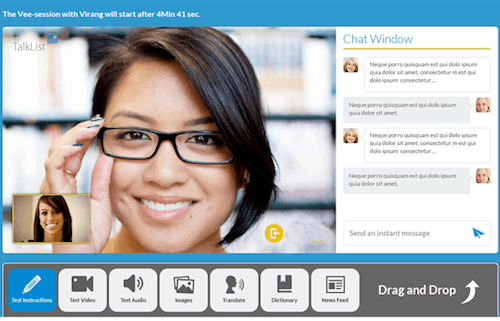The Challenge Of Global Education And Language Learning Technology
Today, we are increasingly connected to the rest of the world:
- Economic crisis as far away as Greece have an immediate effect on our stock market.
- An Ebola outbreak in Africa spreads fear globally and dominates the news.
- Cyber attacks that cause disruption or compromise information are launched from any location on earth.
- Automobile exhausts in the U.S. and coal-burning power plants in China both contribute to air pollution and global climate change.
The clothing we wear, the products we buy, and even the food we eat often originates in other countries. Yet many US citizens are insular, unaware of world geography, unable to communicate in languages other than English, and insensitive to cultural differences. Beyond our borders, people in other countries have a distorted view of Americans, shaped by news stories, propaganda, foreign policy decisions, movies, popular music, and even video games.
Today’s challenges can be addressed successfully only if we can develop cooperative and trusting relationships across the world. If the emerging global society is to be a healthy one, we need American students to acquire other languages and to learn about other cultures and customs—and we need people from other counties to learn American English and to have a more accurate understanding of American culture and values. Our ability to educate and prepare the world’s future leaders in politics, business, and education along with our determination to set positive examples for the value of democracy, civility, and human rights can shape the future of the world.
However, there were many barriers to preparing students adequately for a global economy and society. The most significant barriers include limited resources, language barriers, and lack of mobility of students.
Meeting The Challenge
New technologies provide ways to overcome the traditional barriers to global education and language learning. The 21st century ushered in an era with the highest level of global interconnectedness in human history. Technology now allows us to view live images of events taking place virtually anywhere in the world—24 hours a day and 7 days a week. We communicate with people in remote parts of the world and read documents without physically holding them. Text, voice, and images are transferred with a click on a cellular phone or a computer. Students sign up for online classes that are taught by educators who are nowhere near where the students live.
A significant benefit to instant global communications is that students can improve their language skills through student-to-student conversations regardless of where they live. The introduction of Peer-to-Peer video conferencing using devices students are familiar with can increase personal interaction. And it can be accomplished from anywhere – opening the world to students who do not have the time or resources to travel.
Peer-to-Peer video conferencing also creates the opportunity for students to build an international network of friends and contacts. A contact network can help students to develop business leads, find new job opportunities, and increase their knowledge of other countries and cultures. A global contact network built from having personal conversations with other students around the world will provide lasting benefits throughout the student’s career. Being bilingual is more than being able to read and write in a second language. Communication through speaking is a very important element.
Through the use of Peer-to-Peer video conferencing, students can study new languages and to learn about cultural differences while building a global support network. Students who take advantage of online access tools, such as TheTalkList, can use their devices to reach the peers nearly anywhere in the world. They can build contact networks with other students internationally, learn about other cultures, and improve spoken language skills. From the comfort of their homes or college campuses, they can begin the journey that will make them the global leaders of tomorrow.
Best Practices for Online Access Tools
Using Online access tools provides many advantages to students including:
- Choice
Large choice of tutors and others with varying ages, backgrounds, and geography. - Flexible and convenient scheduling
Wide calendar availability, on demand, cancellation policy - Pricing
Variable pricing, no contracts, trusted payment methods - User experience
User interfaces tailored for language learning & cultural exchange - Social attraction
Personal interactions that reach across cultures and borders for friendly fun while learning - Safety
Proper consent policy, policies to prohibit inappropriate conversations - Privacy
1-to-1 classes using secure video - Rating
Options for students to rate their experiences with tutors


